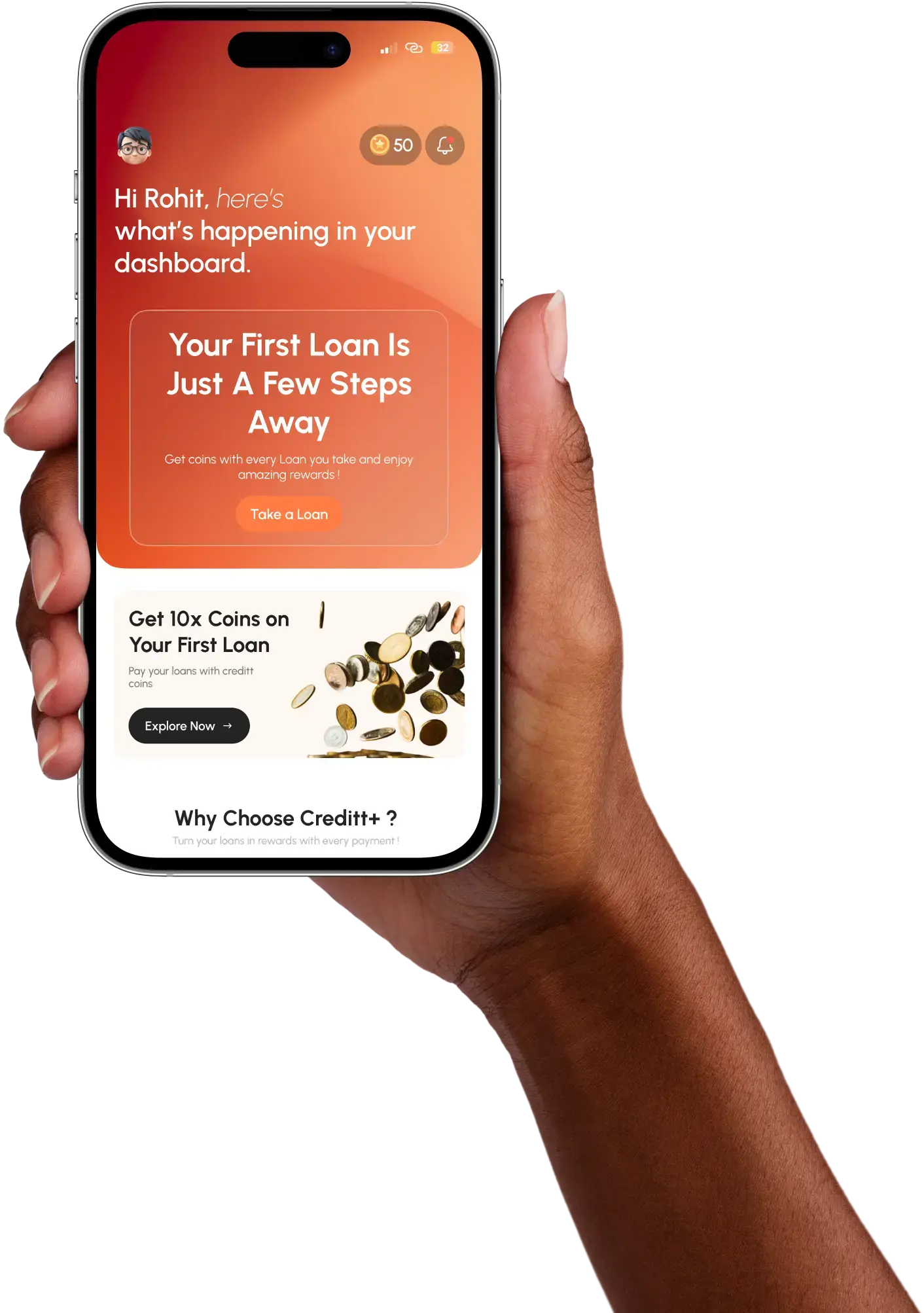Pursuing higher education is as much a financial decision as it is an academic one. Beyond tuition fees, students and families must account for costs like accommodation, travel, study materials, and even everyday living expenses. The total outlay can stretch far beyond what is initially expected, leaving many searching for quick and flexible funding options.
This raises an important question: can a personal loan be used for higher education? The simple answer is yes. Unlike a traditional education loan that is tied strictly to academic payments, a personal loan offers broader flexibility and faster approval. It allows you to cover expenses that do not fall neatly into the “tuition” category. But this flexibility also comes with trade-offs, such as higher interest rates and the need for immediate repayment.
For students and salaried professionals, a personal loan can act as a funding cushion when other sources fall short. The real difference lies in how wisely you evaluate the costs, manage repayment, and choose the right lending partner.
Table of Contents

Understanding the Basics: What Is a Personal Loan for Education?

Top Benefits of Using a Personal Loan for Higher Studies

Risks to Consider Before Taking a Personal Loan for Higher Studies

Is a Personal Loan for Education Really Helpful for Salaried Employees?

Why Choose Creditt+ for a Personal Loan for Education?

Conclusion

FAQ
Understanding the Basics: What Is a Personal Loan for Education?
A personal loan for education is an unsecured loan offered by banks and NBFCs to cover academic costs without requiring collateral. Unlike traditional education loans, which are specifically designed for tuition and related expenses, personal loans can be used more broadly; not just for tuition but also for living costs, exam fees, laptops, and travel.
The main difference lies in structure: education loans are secured, often come with moratoriums, and qualify for tax deductions. Personal loans, on the other hand, usually require repayment immediately and do not provide tax benefits.
Eligibility is based largely on your credit score, stable income, and repayment capacity. Salaried individuals with consistent earnings find it easier to qualify for these loans. Students without income often rely on co-borrowers like parents.
When exploring types of personal loans, many lenders now provide tailored variants for education, travel, or medical expenses. These variations don’t change the basic structure of the loan but help borrowers apply under categories aligned with their needs.
Top Benefits of Using a Personal Loan for Higher Studies
When families or salaried individuals ask, can a personal loan be used for higher education, the real value comes from understanding the tangible advantages. A personal loan for education may not carry the same features as an education loan, but in many situations, it proves to be the more practical choice.
Speed and Convenience
Traditional education loans often involve lengthy documentation, verification from educational institutions, and even guarantors. In contrast, personal loans are designed for speed. Many banks and NBFCs disburse funds within just a few hours of approval, which is especially helpful when last-minute admission deadlines or overseas payments arise. This immediacy makes it one of the strongest benefits of taking a personal loan for studies.
Flexible Usage
Education loans are restricted to academic expenses, but life during higher studies demands more than just tuition. Renting an apartment abroad, purchasing learning devices, paying visa fees, or covering daily living expenses all require flexibility. Personal loans allow you to channel funds exactly where you need them. Among different quick loans, this flexibility stands out for students and working professionals.
Accessibility Without Collateral
A common challenge in how to get education loan is the collateral requirement for large sums. Personal loans remove this hurdle by relying solely on creditworthiness and income profile. This makes them accessible for middle-class families who may not have assets to pledge but need urgent educational funding.
Digital Ease
Modern lending platforms prioritize user experience. Borrowers can apply online, upload documents, track approvals, and set up automated EMIs within minutes. This digital-first approach saves time and minimizes stress for those balancing work, travel, and academic planning.
Risks to Consider Before Taking a Personal Loan for Higher Studies
While personal loans are convenient, they are not free of downsides. Borrowers must carefully weigh risks before committing, because ignoring them can lead to long-term financial strain.
Higher Interest Burden
Personal loans typically carry higher interest rates than secured education loans. A difference of 2–4% might appear small initially, but over a repayment tenure of five years, it can translate into a significant increase in total outflow. This is why financial experts advise comparing multiple lenders before applying.
No Moratorium Period
Unlike education loans, which let students begin repayment after completing their course, personal loans demand EMI payments immediately. For a full-time student without steady income, this creates a heavy burden. Such loans work better for salaried individuals who are already earning and can manage repayment from their monthly salary.
Hidden and Ancillary Charges
Processing fees, insurance bundling, late penalties, and prepayment charges can increase the cost of borrowing. Lenders often highlight attractive interest rates but do not always emphasize these add-ons. Reading the fine print is essential to avoid surprises.
Absence of Tax Benefits
Education loans qualify for Section 80E deductions on interest payments, reducing the effective cost. Personal loans do not come with such relief, making them more expensive in the long run.
Credit Health Risks
Defaulting on personal loan EMIs directly affects your credit score. A poor credit history limits access to future loans such as home or car finance. For families already managing multiple EMIs, an additional personal loan can tip the balance unfavorably. Borrowers should avoid over-leveraging simply because Instant Personal Loans are easily available.
Is a Personal Loan for Education Really Helpful for Salaried Employees?
For salaried professionals, the answer leans toward yes — provided the loan is planned carefully. Their stable monthly income and employment records make approval easier, and lenders often extend pre-approved offers to this segment.
Why Salaried Borrowers Qualify Easily
Banks and NBFCs consider salaried employees low-risk borrowers because their repayment capacity is predictable. Monthly salary credits act as proof of income, reducing the need for additional guarantors or collateral.
Best Use Cases
A personal loan works especially well for part-time MBA programs, upskilling certifications, or short-duration international courses where an education loan may not be available. It also helps bridge the gap when education loans cover tuition but leave living expenses uncovered.
Balancing Financial Commitments
The flip side is that salaried individuals are already tackling multiple obligations like home rent, existing EMIs, insurance premiums, and family expenses. That is why before taking a personal loan, it is crucial to ensure the debt-to-income ratio does not exceed 40–45%. Overstretching finances can create repayment stress.
Long-Term Value
If managed responsibly, a personal loan can even serve as a credit-building tool. Consistent EMI payments improve credit scores, enhancing eligibility for future financial products like home loans. Thus, for salaried employees, a personal loan for education can be both a short-term enabler and a long-term strategic choice.
Why Choose Creditt+ for a Personal Loan for Education?
Among various lenders, Creditt+ stands out for its borrower-friendly approach, especially when it comes to Loans for Education.
Competitive and Transparent
Creditt+ offers market-aligned interest rates with clear disclosure of fees. Borrowers know upfront what they are paying for, avoiding hidden surprises.
Fast Approvals and Disbursals
Academic deadlines do not wait. Creditt+ ensures same-day or next-day approvals, making it ideal for last-minute tuition payments or overseas transfers.
Tailored for Salaried Borrowers
Repayment schedules are designed to align with salary cycles, giving borrowers predictable cash flow management. This structure minimizes the stress of managing multiple obligations simultaneously.
Trust and Support
Creditt+ has built a reputation for responsive customer service. Borrowers can reach out for guidance on repayment strategies, prepayment options, and financial planning; a level of support often missing in larger institutions.
Conclusion
So, can a personal loan be used for higher education? Absolutely, but with conditions attached. Personal loans offer unmatched flexibility and speed, making them ideal for urgent or diverse funding needs. However, they also come with higher costs, immediate repayment obligations, and no tax relief.
For salaried professionals, these loans can be particularly useful as long as they keep debt within manageable limits and plan repayment wisely. Choosing lenders like Creditt+ adds further assurance through transparent terms, quick approvals, and borrower-focused services.
Ultimately, the effectiveness of a personal loan for education depends on careful evaluation of expenses, comparison of lenders, and disciplined repayment. Use them strategically as a supplement to education loans, scholarships, or personal savings, rather than as the sole funding source.







